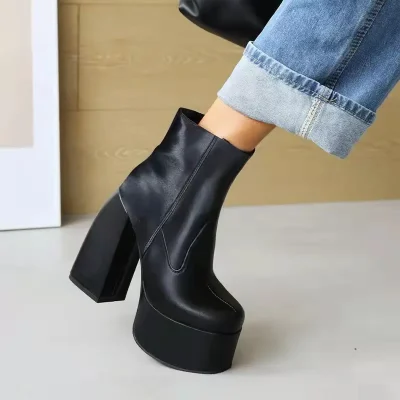Selecting the right boot sole for different terrains is crucial for ensuring traction, stability, and comfort during outdoor activities. Here’s a guide to help you choose the most suitable boot sole for various terrains:
1. Hiking and Trail Running
- Terrain: Uneven trails, rocky terrain, mud, and varying inclines.
- Recommended Sole: Vibram rubber soles with deep, multidirectional lugs for excellent grip and traction on rugged terrain.
- Features: Cushioned midsoles for shock absorption, rock plates for protection against sharp objects, and breathable materials for comfort during long hikes or runs.
2. Mountain and Alpine Climbing
- Terrain: Steep ascents, rocky surfaces, snow, ice, and mixed alpine conditions.
- Recommended Sole: Vibram mountaineering soles with aggressive lug patterns and built-in crampon compatibility for traction on snow and ice.
- Features: Stiff and rigid soles for stability and support, insulated options for warmth in cold conditions, and waterproof materials for protection from snow and moisture.
3. Backpacking and Trekking
- Terrain: Varied terrain including trails, rocky paths, river crossings, and rugged wilderness.
- Recommended Sole: Durable rubber outsoles with deep lugs and multidirectional tread patterns for traction on diverse surfaces.
- Features: Supportive midsoles for carrying heavy loads, cushioning for comfort during long treks, and waterproofing for protection against wet conditions.
4. Desert and Arid Environments
- Terrain: Sandy dunes, rocky deserts, and hot, dry conditions.
- Recommended Sole: Vibram or durable rubber outsoles with wide-spaced lugs to prevent sand and debris buildup.
- Features: Breathable materials to prevent overheating, lightweight construction for agility, and cushioning for comfort on hard surfaces.
5. Wet and Muddy Conditions
- Terrain: Wet trails, muddy paths, marshes, and river crossings.
- Recommended Sole: Boots with waterproof rubber or synthetic outsoles with deep, self-cleaning lugs for traction in mud and wet conditions.
- Features: Waterproof membranes to keep feet dry, quick-drying materials to prevent waterlogging, and reinforced toe caps for protection against rocks and debris.
6. Urban and City Environments
- Terrain: Concrete sidewalks, paved streets, and urban landscapes.
- Recommended Sole: Boots with durable rubber or synthetic outsoles with moderate lug patterns for traction on urban surfaces.
- Features: Shock-absorbing midsoles for walking on hard surfaces, lightweight materials for all-day wear, and stylish designs for urban fashion.
7. Work and Construction Sites
- Terrain: Construction sites, industrial environments, and rugged work conditions.
- Recommended Sole: Heavy-duty rubber or TPU outsoles with aggressive lug patterns for traction on uneven surfaces and resistance to oil, chemicals, and abrasion.
- Features: Steel or composite toe caps for protection against impacts and compression, supportive midsoles for comfort during long shifts, and waterproofing for protection in wet conditions.
8. Snow and Ice
- Terrain: Snow-covered trails, icy surfaces, and winter conditions.
- Recommended Sole: Vibram Arctic Grip or specialized winter outsoles with aggressive lugs and ice-specific traction technologies.
- Features: Insulated materials for warmth in cold temperatures, waterproofing to keep feet dry, and compatibility with crampons or traction devices for additional grip on ice.
Conclusion
Choosing the right boot sole for different terrains involves considering factors such as traction, stability, support, waterproofing, and insulation. Whether you’re hiking, climbing, trekking, or working outdoors, selecting the appropriate boot sole will enhance your performance and comfort while minimizing the risk of slips, falls, and injuries.


















